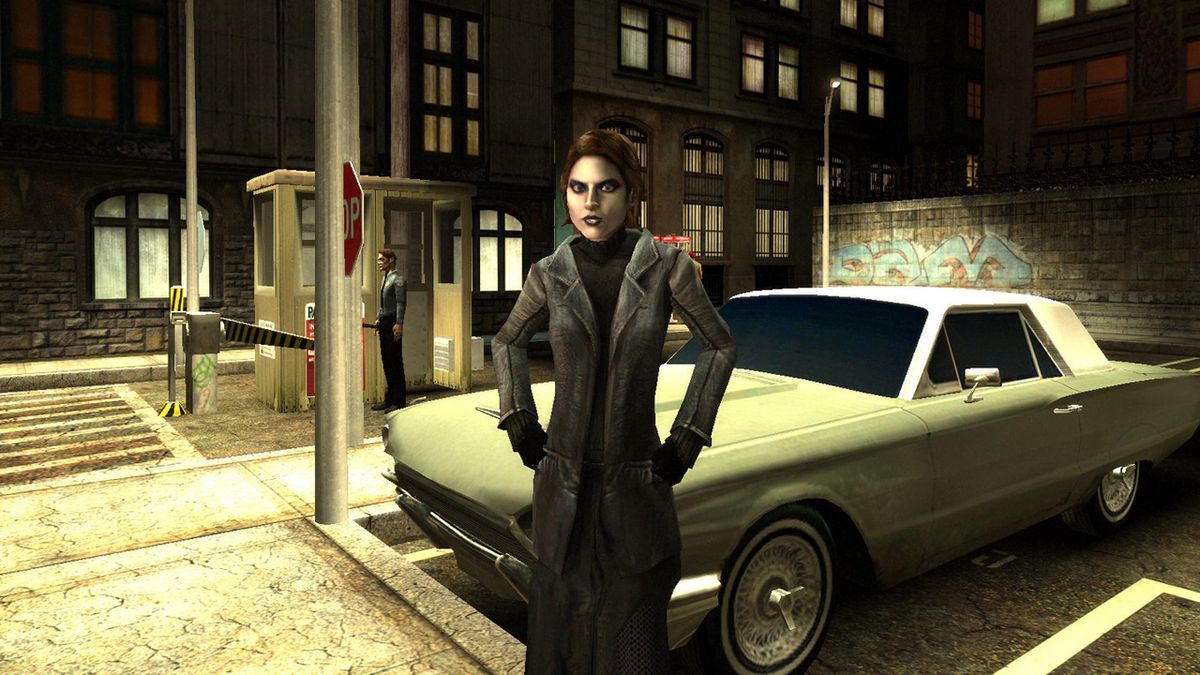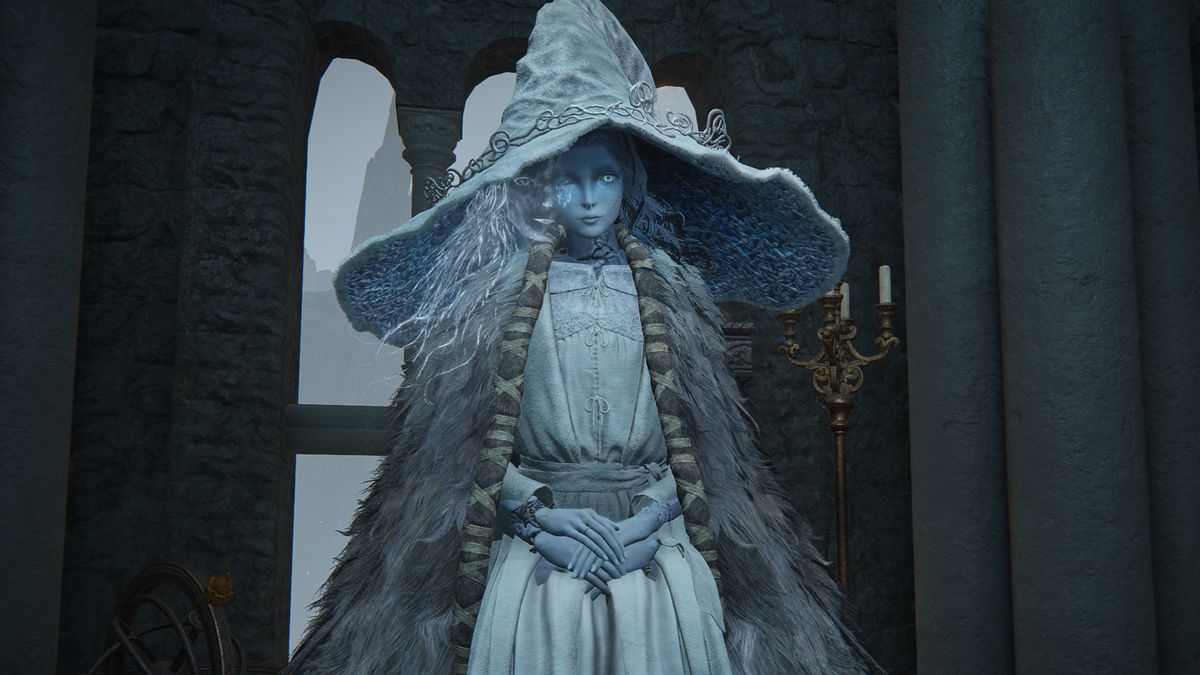The year of 2004 was an auspicious one for videogames. In fact, it was, perhaps, a bit too auspicious for Troika, a small CRPG development house headed by ex-Black Isle veterans.
Troika had to release an embattled, over budget, and unfinished game of a niche genre right smack dab in the middle of a legendary autumn, which also boasted Halo 2, Half-Life 2, and Metal Gear Solid 3. Vampire: the Masquerade – Bloodlines never stood a chance really, and ended up selling only 72,000 copies in its initial release. Afterwards, Troika struggled to find backing for subsequent projects, and were forced to close their doors in 2005.
The tapes never stopped circulating though, so to speak. Strong word of mouth helped its reputation flourish on RPG forums, and VtMB found a second life through digital distribution. This game was not on my radar at the time of its initial release, and even if it was, I was nine years old, and my dad would have immediately put the kibosh on any attempt on my part to play this M-rated game with a scantily-clad, blood-spattered, Harley Quinn-looking lady on the cover.
No, like most of its fans, I came to Bloodlines years later, drawn by that strong hearsay. A lot of its design choices frustrated me my first time around, and I put off finishing that first playthrough for almost half a year. Despite that, it’s a game I simply could not get out of my head, and I found myself diving in for another go.
Bloodlines was released in a rather rough state, on account of its disastrous development, but these days it’s pretty polished as far as huge, overly ambitious RPGs go. The fan-made Unofficial Patch, spearheaded by the heroic Werner Spahl or Wesp5 on Reddit and ModDB really cleans up VtMB’s act. Its basic version should be the first thing you download when going off Steam or physical install, and is already included in the GOG version of the game.
I decided to take things just a step further this time around. Spahl also offers a more extensive ‘plus’ version of his patch, which includes quality of life fixes, cut content, and some bonus character creation options. I decided to forgo it on my first playthrough, purity of the developers’ vision and all that, but this time I figured, what the hell, let’s try something new.
Final nights
Vampire: the Masquerade – Bloodlines is set in the World of Darkness tabletop setting created by White Wolf Publishing. WoD’s fiction is predicated on the ghoulies, ghosties, wolfmen, and of course, Draculas of classic cinema hiding in plain sight in our modern times, or ‘the Final Nights’. Modern vampires are descendants of the biblical Cain, the first murderer, and fear the return of him or his immediate progeny, the apocalyptic Gehenna. It’s in this context that your character in VtMB is first embraced by a member of Los Angeles’ vampire underground, and brought into the fold.
In Bloodlines, you choose a vampire clan at character creation, which covers a combined race/class role. My first time through, I went with clan Malkavian, mad prophets whose special insight into the vampire condition sets them apart from their fellow kindred.
In Bloodlines’ ruleset, they get some special abilities that help with stealth and conversations. The big draw for me was that Malks have all of their dialogue completely rewritten in the spirit of Fallout’s low-intelligence playthrough, and other characters react accordingly.
This time around, I opted for clan Tremere, secretive blood-wizards who seek to understand their curse by way of academic study. They get some bonus dialogue options by way of their ‘dominate’ special ability, but the real draw is thaumaturgy. Thaumaturgy is the in-game representation of that signature Tremere blood magic, and it rips. The skill’s progression begins with a blood-based magic missile that, when timed right, has effectively infinite ammo. Later thaumaturgy skills include an AoE stun and a highly damaging blood explosion.
These fun Tremere abilities completely changed the game for me. My problem when I booted up Bloodlines for my first playthrough was that I’d heard all these comparisons to immersive sims, especially Deus Ex. I approached VtMB as I typically approach those sorts of games: opting for perfect, non-lethal stealth.
The issue is that while Bloodlines shares a first person perspective and similar commitment to player agency as immersive sims, it’s coming at these ideas from a completely different lineage of game design: CRPGs like Fallout or Troika’s previous effort, Arcanum. Bloodlines’ levels are too cramped, its enemy AI simultaneously too dumb and too unpredictable, for it to be played like a stealth game. When I abandoned stealth and subtlety and went in loud, slinging blood missiles around and letting my only concession to pacifism be dialogue checks, I found myself really enjoying its combat despite Bloodlines’ sluggish, early 2000s action RPG mechanics.
I’m still kicking myself for how much I got in the way of my own fun that first playthrough, but I’d argue it’s a huge point in Bloodlines’ favour that even such sub-optimal and unsupported styles of play can still see you through right to the very end of the game.
Crypt Keepers
VtMB’s early game had me excited and invested right away, just like the first time, a rare thing in a genre that loves beating around the bush in starting villages. The first hub you get to explore, Santa Monica, is a fantastic introduction to Bloodlines’ whole aesthetic, melding classic noir with an early 2000s punk raver vibe (think the dorks Neo hangs out with at the beginning of the Matrix).
I progressed through Bloodlines’ critical path opting for mostly the same resolutions of quests and moral choices (I’m a big softy and I don’t know how to be mean, even in games), but experienced something new in the form of some Tremere-exclusive content and a cut questline added back in by Wesp5.
Tremere players get access to a bonus player home and some thaumaturgy power ups by chatting up resident vampire archwizard Maximillian Strauss, and completing sidequests in his favour. Forming a working relationship with Strauss in the early game does not lock you into the ending where you align with him, so even Tremere kindred who favour the freedom loving, dorky good guy Anarch faction, like I do, have good reason to help him out.
Wesp5’s reconstructed quest involving the downtown LA library leaves a bit to be desired. Most frustrating for me was its early stages, where you have to track down notes scattered across the city in the cut content interiors he added back in. It’s very neat to see these areas, like a cigar club, or a recently shuttered bistro, but you don’t really do anything in them aside from pick up the note, which then leads you to your next objective.
It all culminates with a boss fight in the library against a teleporting vampire assassin (very cool), which you only reach after a puzzle section that penalises you for killing any of the hostile human guards in it (not so cool). A final hurdle is a persistent bug, which traps you in the library on quest completion, whose only resolution is console commands. At the time of my playthrough, it had not been resolved. The most impressive thing here is definitely the way the quest’s final boss can be seen stalking you throughout the game, G-Man style. It integrates him with the preexisting story and is a clever idea.
To live forever
The quest, QoL fixes, and roleplaying options added in by the plus patch are certainly appreciated, but the most critical addition is one, single door. Bloodlines’ weakest moments are a handful of completely linear, combat-mandatory dungeon slogs, the favoured self-sabotage of moody, cerebral RPGs everywhere.
The worst of the lot is a positively inexcusable sewer sequence at the halfway point. It’s about twenty to forty-five minutes of no story, no dialogue, just long corridors with high-hitpoint flesh monsters jumping out at you and an apocalyptically fiddly water-pump puzzle that I bypassed with the noclip cheat on my first playthrough. The plus patch adds in a shortcut to the very end a little less than a quarter of the way through the sewers, and Bloodlines is infinitely richer for it.
I can’t end without bringing up my favourite part of the game, the Giovanni Mansion mission late in the main quest. A secretive, ancient clan is holding your priceless McGuffin, and a big soirée at their base of operations gives you the perfect opportunity to sneak in and steal it back. I favoured the social approach, smooth talking a guest outside into giving you an invitation and ingratiating yourself with competing Giovanni factions to your own ends.
But you’re also free to sneak your way through, bypassing the need for an invitation and getting in and out without a trace. While the combat bloodbath is often the most boring way forward in an RPG, here it provides an encounter with a bonus boss, the Giovanni elder Bruno, who you don’t even have the chance to talk to in the other paths. This player freedom, upheld by quality writing and worldbuilding, exemplifies everything I love about Bloodlines.
So if you dig RPGs and are at all on the fence, go and grab Vampire: the Masquerade – Bloodlines off your digital distributor of choice. Just be sure to get the plus patch too, I don’t want your love of this game to wither in an awful sewer full of flesh monsters like mine briefly did.


